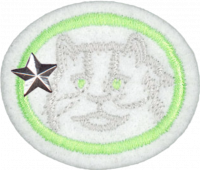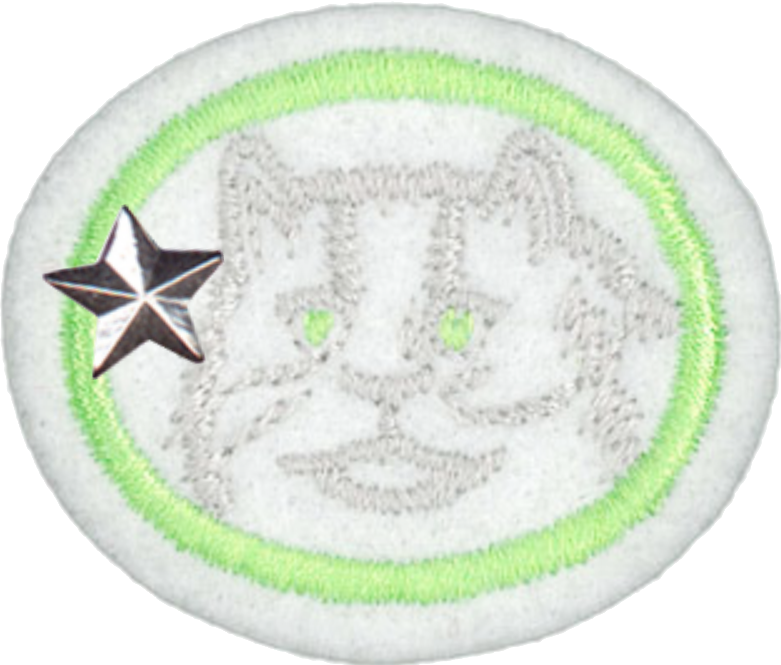Difference between revisions of "AY Honors/Cats - Advanced/Answer Key/es"
(Created page with "</noinclude> Verdadero") |
|||
| Line 59: | Line 59: | ||
{{ansreq|page={{#titleparts:{{PAGENAME}}|2|1}}|num=2f}} <!--T:17--> | {{ansreq|page={{#titleparts:{{PAGENAME}}|2|1}}|num=2f}} <!--T:17--> | ||
<noinclude></noinclude> | <noinclude></noinclude> | ||
| − | Verdadero | + | Verdadero. |
{{clear}} | {{clear}} | ||
| Line 102: | Line 102: | ||
{{CloseReq}} <!-- 2h --> | {{CloseReq}} <!-- 2h --> | ||
{{ansreq|page={{#titleparts:{{PAGENAME}}|2|1}}|num=2i}} <!--T:34--> | {{ansreq|page={{#titleparts:{{PAGENAME}}|2|1}}|num=2i}} <!--T:34--> | ||
| − | <noinclude> | + | <noinclude></noinclude> |
| − | </noinclude | ||
| − | |||
| − | |||
| − | + | {{clear}} | |
| − | |||
| − | |||
| − | + | {{clear}} | |
| − | |||
| − | |||
| − | + | <noinclude></noinclude> | |
| − | <noinclude | ||
| − | |||
{{CloseReq}} <!-- 2i --> | {{CloseReq}} <!-- 2i --> | ||
{{ansreq|page={{#titleparts:{{PAGENAME}}|2|1}}|num=2j}} <!--T:37--> | {{ansreq|page={{#titleparts:{{PAGENAME}}|2|1}}|num=2j}} <!--T:37--> | ||
| − | <noinclude> | + | <noinclude></noinclude> |
| − | </noinclude | ||
| − | |||
| − | |||
| − | |||
| − | + | {{clear}} | |
| − | |||
| − | |||
| − | + | {{clear}} | |
| − | |||
| − | |||
| − | + | {{clear}} | |
| − | |||
| − | |||
| − | + | <noinclude></noinclude> | |
| − | <noinclude | ||
| − | |||
{{CloseReq}} <!-- 2j --> | {{CloseReq}} <!-- 2j --> | ||
{{CloseReq}} <!-- 2 --> | {{CloseReq}} <!-- 2 --> | ||
| Line 150: | Line 129: | ||
</div></noinclude> | </div></noinclude> | ||
{{ansreq|page={{#titleparts:{{PAGENAME}}|2|1}}|num=3a}} | {{ansreq|page={{#titleparts:{{PAGENAME}}|2|1}}|num=3a}} | ||
| − | <noinclude> | + | <noinclude></noinclude> |
| − | </noinclude | ||
| − | |||
| − | |||
| − | + | {{clear}} | |
| − | |||
| − | |||
| − | + | {{clear}} | |
| − | |||
| − | |||
| − | + | {{clear}} | |
| − | |||
| − | |||
| − | + | {{clear}} | |
| − | |||
| − | |||
| − | + | {{clear}} | |
| − | |||
| − | |||
| − | + | {{clear}} | |
| − | |||
| − | |||
| − | + | {{clear}} | |
| − | |||
| − | |||
| − | + | {{clear}} | |
| − | |||
| − | |||
| − | + | {{clear}} | |
| − | |||
| − | |||
| − | + | <noinclude></noinclude> | |
| − | <noinclude | ||
| − | |||
{{CloseReq}} <!-- 3a --> | {{CloseReq}} <!-- 3a --> | ||
{{ansreq|page={{#titleparts:{{PAGENAME}}|2|1}}|num=3b}} <!--T:51--> | {{ansreq|page={{#titleparts:{{PAGENAME}}|2|1}}|num=3b}} <!--T:51--> | ||
Revision as of 17:30, 7 April 2021
Nivel de destreza
2
Año
2001
Version
30.12.2025
Autoridad de aprobación
Asociación General
1
Para consejos e instrucciones, véase Gatos.
2
2a
(1) Es demasiado salvaje para ser un buen gato doméstico.
(2) Es la mascota nacional de Canadá.
(3) Parece ser lampiño.
2b
2c
(1) Korat (Tailandia) (a) Muestra cojera cuando se recoge. (2) Ragdoll (EE. UU.) (b) Se remonta a los gatos salvajes de Kenia. (3) Sokoke (Dinamarca) (c) Simboliza la buena suerte.
2d
2e
i. Gato del sumidero
ii. Gato gordo
iii. Gato volador
2f
Verdadero.
2g
i. Gato Abisinio
ii. El gato Habana Brown
iii. Gato de Geoffroy (gato montés sudamericano)
2h
Falso.
2i
i. Mist australiano
ii. Gato dingo
iii. Manchado y/o neblina mármol (Mist)
2j
3
3a
3b
See the answers to part a above to refresh your memory on caring for cats. The owner will likely provide food for the cat, and it is best to feed it what it is used to.
Cats should not become feral because they tend to overbreed, creating ever-larger populations of feral cats. Feral cats can become a nuisance and cannot be approached by humans.
Feral cats may live alone but are usually found in large groups called feral colonies. The average life span of a feral cat that survives beyond kittenhood is usually cited as being less than two years, while a domestic housecat lives an average of 12 to 16 years.
Cities, Australia, and North America are not native environments for cats. The domestic cat comes from temperate or hot, dry climates and was distributed throughout the world by humans. Cats are extremely adaptable, and feral felines have been found in conditions of extreme cold and heat. They are more susceptible to cold, damp conditions than to cold alone. In addition, they are vulnerable to predators such as dogs, feral pigs, wolves, bears, cougars, bobcats, foxes, crocodilians, birds of prey, and coyotes.
Feral cats are often apex predators in local ecosystems, and their predation on small mammals and birds, particularly endangered ground-nesting birds, is of increasing concern. There is little doubt that feral cats are extremely effective at controlling or even eradicating small animal populations, and some cite[citation needed] the utility of cats in controlling populations of verminous rodent species. This is one of the major justifications for the keeping of farm cats. However, conservationists argue that feral cats contribute greatly to the killing of songbirds and other endangered birds, with estimates that bird loss is at 100 million a year due to predation.
Numerous Australian environmentalists and conservationists claim that the feral cat has been an ecological disaster in Australia, inhabiting most ecosystems except dense rainforest, and being implicated in the extinction of several marsupial and placental mammal species.
In the United States, there is debate about how to deal with feral cat populations - many municipalities make it legal to kill them and classify them as vermin or pests. Some advocate culling feral cat populations by hunting, arguing that it is the most cost-effective method of population control.
Trap-Neuter-Return (TNR) programs are facilitated by many volunteers and organizations in the United States. These organizations trap feral cats, sterilize them through neutering before releasing them. Variations of the program may include inoculation against rabies and other viruses and sometimes long-lasting flea treatments. Frequently, attending veterinarians cut the tip off one ear during spay/neuter surgery to mark the individual as being previously caught. Volunteers often continue to feed and give care to these cats throughout their lives. Many animal care experts believe that it is prohibitively difficult if not often impossible to domesticate and adopt a feral cat unless it is trapped and socialized before six weeks of age.
3c
In many countries the term humane society is used mostly for societies for the prevention of cruelty to animals (SPCA's).
The Society for the Prevention of Cruelty to Animals (SPCA) is any of a number of animal welfare organizations whose operations include protecting and providing shelter to animals in danger. The SPCAs are non-profit organizations that campaign for animal welfare and take in abused or abandoned animals, and help them to get adopted. See:
- Canadian Federation of Humane Societies
- Royal New Zealand Society for the Prevention of Cruelty to Animals
- Royal Society for the Prevention of Cruelty to Animals Australia
- Singapore Society for the Prevention of Cruelty to Animals
- Société protectrice des animaux (France)
- Society for the Prevention of Cruelty to Animals (Hong Kong)
- Society for the Prevention of Cruelty to Animals, Selangor, Malaysia
- Society for the Prevention of Cruelty to Animals International
- Visakha Society for the Prevention of Cruelty to Animals (Visakhapatnam, India)
- Zimbabwe Society for the Prevention of Cruelty to Animals
- United States
- American Society for the Prevention of Cruelty to Animals
- Society for the Prevention of Cruelty to Animals of Texas
- Society for the Prevention of Cruelty to Animals, Monterey County, California
- Society for the Prevention of Cruelty to Animals Los Angeles
- San Francisco SPCA
- Virginia Beach SPCA
- United Kingdom
- Royal Society for the Prevention of Cruelty to Animals — England and Wales
- Scottish Society for the Prevention of Cruelty to Animals — Scotland
- Ulster Society for the Prevention of Cruelty to Animals — Northern Ireland


